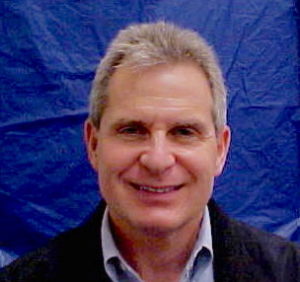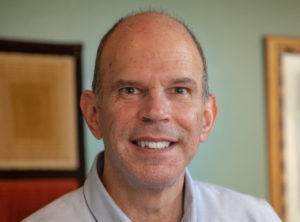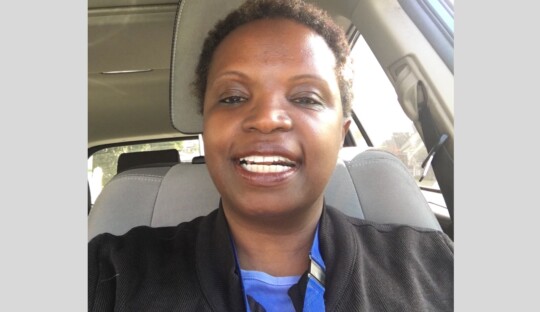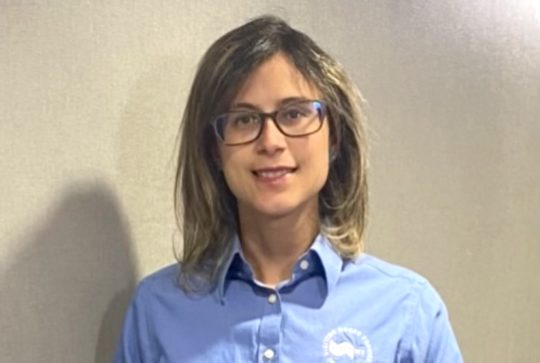Special Feature: Six VNSNY Rehab Therapists Share Their Insights!
In honor of National Rehabilitation Awareness Week, Frontline asked six VNSNY rehabilitation therapists—some who have been with the organization for decades, and others who joined VNSNY fairly recently—to share their thoughts about the work they do. Here’s what they had to say:
Sonia Rapaport, Physical Therapist Instructor — Partners in Care
 Sonia has been working as a PT with VNSNY and Partners in Care since 1995.
Sonia has been working as a PT with VNSNY and Partners in Care since 1995.
“As an instructor in the education department of Partners in Care, I design curriculums and give PT and rehabilitation training to home health aides. I am particularly proud of the relatively new Safe Patient Handling Class I created for HHAs and RNs to prevent injuries in the field. I also updated our training curriculum because of changes in the healthcare climate. We had to get much more detailed about how to handle patients who are sicker and less mobile than they used to be, because people are being released from the hospital much earlier and need a lot of help moving around safely. Home health aides need more advanced skills now—how to use a wheelchair properly, how to help patients get in and out of bed, body mechanics, and how to reinforce the home exercise regimens that the PTs designed. We are currently rolling out a new program in conjunction with our visiting nurses called BEEP—Balance Enhancement Exercise Program. These are exercises for patients who don’t have a PT, but do have a nurse and HHA to help them get stronger.
“It’s not only the patients’ injuries that I address. Home health care staff get injured on the job more than construction workers do! How they use their body is very important. We teach them how to use sliding boards and mechanical lifts to help them do transfers on their own that would require two people in a hospital setting. I’ve trained in martial arts—Aikido—for over 20 years, and that has helped me become a better PT and teacher in terms of how to use one’s body without getting injured, or help someone else move without causing an injury.
“This is my 40th year as a physical therapist and I am extremely happy I chose this career. In a home setting you really get to see patients’ abilities and where they have challenges, and you can fine-tune their program to that—helping them adjust to the world with their potentially changed abilities. When you walk into a patient’s home or into a classroom you have no idea what you’re going to encounter there. It’s about staying alert and open to change and new possibilities—which is why this job never gets boring or stagnant.”
Lyndon Hemedes, Physical Therapist — Manhattan
 Lyndon started as a PT with VNSNY Home Care in July of this year. He works in Manhattan Branch 4.
Lyndon started as a PT with VNSNY Home Care in July of this year. He works in Manhattan Branch 4.
“As a physical therapist, my primary job is to help patients improve their strength and balance—basically helping them ambulate and be more independent in their home and community. Most of my patients are orthopedic cases, people who have had fractures or joint-replacement procedures. I also see geriatric patients who may have been hospitalized for a long time and have become deconditioned. How often I see my patients depends on their condition. If it’s a total hip replacement, for instance, the protocol is three times a week. For general deconditioning, it might be twice a week. It’s a case-by-case situation.
“Before coming here, I worked in early intervention for eight years. My patients were zero to three years old, so I was dealing with babies and toddlers. Now, most of my patients tend to be elderly—so I’ve sort of gone from one extreme to the other! There are pros and cons to both. With babies and toddlers it’s much harder, because they don’t follow instructions. You have to be creative and playful, like putting a favorite toy up on a table if you want the child to stand. With few exceptions, adults will follow instructions, so the treatment is more straightforward. The biggest challenge with adults, I’m finding, is the organizing and scheduling. Because I work across a large area in Manhattan, I try to cluster my visits by neighborhood, but that’s not always possible because different patients need me at different specific times.
“Non-compliant patients can also be a challenge, of course. You want to help, but they can be resistant, or set in their ways, or scared to try new things that would make their lives easier—like using a walker, or learning proper sit-to-stand or bed mobility. My whole reason to be there is to help. To do this job, you have to have a passion for the work. I love what I do. Helping patients progress and get well is the goal, and nothing makes me happier than achieving that.”
Arthur Jacobs, Speech-Language Pathologist — Queens
 Arthur, a speech therapist with VNSNY Home Care’s Queens Branch 4, has been with VNSNY since 1986.
Arthur, a speech therapist with VNSNY Home Care’s Queens Branch 4, has been with VNSNY since 1986.
“When most people think of speech therapy, they tend to think of it in terms of a young person who might have an articulation disorder or stuttering, so people are often surprised at the range of disorders that my VNSNY colleagues and I see on a daily basis. I see a good number of patients who have had strokes, as well as patients with adult progressive neurological diseases such as Parkinson’s, multiple sclerosis, and ALS. I also see people with traumatic brain injury and dementia. A lot of my patients also present with swallowing disorders, often as a result of a stroke or head and neck cancer. Decades ago, swallowing disorders weren’t even in the realm of our course work as speech-language pathologists. But because swallowing issues are associated with so many of the conditions we treat, they’ve become an important and integral part of our daily routine.
“As somebody who has been doing this for a long time, my advice to anybody starting out in this field is to be flexible, because home care is ever-changing. There really is no such thing as a typical day. This work in is unique because we get to see many types of people, and they each present with their own specific challenges. One of the biggest rewards of the job is that many of our cases are short-term. Often we get to see gains in just three or four weeks. It’s always a good feeling when we can see progress in a relatively short period of time, and maybe even get them back to baseline—where they were before. It’s also very important to be patient with your patients and with their families and caregivers. Some can have very high expectations or false expectations about what the patient can attain. So you have to be tolerant and mindful when you’re dealing with family members. That is one of the most important qualities of all.”
Katerina Davidov, Speech-Language Pathologist — Queens
 Katerina started with VNSNY Home Care in January of 2018. She is a member of the interdisciplinary care team for Queens Branch 3.
Katerina started with VNSNY Home Care in January of 2018. She is a member of the interdisciplinary care team for Queens Branch 3.
“As a rehab speech therapist at VNSNY, I assess and treat a wide variety of issues—from cognitive disorders to traumatic brain injuries to degenerative diseases, to name just a few. A lot of my patients have dementia, and speech therapy can help them in different ways depending on where they are in the dementia state. If they have just been diagnosed, the dementia can come and go, and I might work with the patient to prolong their speech with daily speech and cognitive exercises. For patients with severe dementia, treatment is often geared more toward family members and caregivers, instructing them on safety when it comes to swallowing, that type of thing.
“A critical part of my job is evaluating patients. Some have swallowing issues due to oral issues—it could be trouble masticating, or it could be a pharyngeal issue, some sort of obstruction or abnormality. Then again, it can be as simple as poorly fitted dentures that fall off when they’re chewing something. I’ve had patients improve simply by getting their dentures refitted! The only real frustrations in my job are when family members don’t get involved, because patients need carryover of care, and if there isn’t any, the patient pretty much plateaus. I do try to encourage these families to get involved—and sometimes that works.
“In my prior job, I worked in the school system treating children with a wide array of issues, from language delays and developmental delays to voice and cognitive disabilities. Before I started working at VNSNY I had no idea how medical this profession can be, and how rewarding it can be working with adults who are struggling with activities of daily living. Just yesterday, I was doing exercises with a patient who had voice issues and some swallowing issues. All of a sudden he stopped me and told me I was an amazing therapist. I was literally about to cry. Because we are not magicians, obviously, but the thought that somebody who is suffering and struggling tells you, thank you, you’re helping me—it just does something to you.”
Mitchel Rabinowitz, Occupational Therapist — Queens
 Mitchel has been with VNSNY for over 35 years. He currently serves as Coordinator of Certified Occupational Therapy Assistant Services for Queens Branch 3.
Mitchel has been with VNSNY for over 35 years. He currently serves as Coordinator of Certified Occupational Therapy Assistant Services for Queens Branch 3.
“As an OT, my focus is to improve the functioning of the person I am working with in terms of doing everyday things—dressing, grooming, bathing, transfers, bed mobility, balance, strength, and coordination, as well as improving safety in the house. I also teach caregivers how best to assist the patient in those areas.
“I’ve been working at VNSNY since 1983. I still remember walking into my first patient’s house as clearly as if it were yesterday. While there is nothing unique in what I do—making sure that my patients are safe and functioning to the best of their abilities within their environments—I like to think that every patient and every day is unique and special. My patients run the gamut. I might start the day treating a child with a developmental disorder, then see an elderly patient in an assisted-living facility who’s had a stroke or recently started falling due to weakness caused by aging or disease. Even though I’ve been working for so many years in the field, every day to me is a new challenge. Every time I walk into a new person’s house I never know what I am going to find.
“Occupational therapy requires a lot of patience in terms of your patients’ families and loved ones and caregivers. More often than not, we’re walking into homes in which something not so nice has happened to the patient and to the family. Whatever this was has thrown the family upside down. So even though someone may get aggravated or excited, you need to always keep your cool and understand the reason why you’re there. It’s best to listen as carefully as you can to the individuals and the families you’re working with to determine what their priorities and goals are, what their focus is and what they hope to get out of the therapy. That way, from the get-go, everyone is on the same page in terms of what you’re working for regarding improving the individual’s functioning and safety.”
Rena Hirsch, Occupational Therapist — Manhattan
Rena is currently an OT with VNSNY Home Care’s Manhattan Branch 5. She started at VNSNY in 2007, then left briefly to conduct research before rejoining the organization.
“I used to work in the Upper East Side and recently switched teams, so now my area is East Harlem. It’s a very diverse population and a bit younger than my prior patient base—our core age group tends to be people in their 40s to 60s. A lot of my patients have complications from diabetes. I see more younger stroke patients than I used to as well—people who may have trouble getting dressed because one side of their body doesn’t work. I also see the occasional oncology patient who might be debilitated as a result of treatment side effects.
“I absolutely love working with my patients. The most important part of this job is to really listen to your clients and their families and to keep your eyes open—to focus on what they need, and not on what your concept might have been going in. Because every person is an individual, even the same condition can be different for different patients. My advice to anybody in this field is to enjoy it. People laugh because I’m cheerful all the time. On Monday, I’m happy because I have a job that I enjoy and I’m always interested in what the day will hold, and on Friday, I’m happy to go take a break.
“I think what we do goes well beyond just the work and the exercises. It’s about relationships. I’m a people person, and I get to spend time with different people all day. There is something new to learn from every single person—maybe a new recipe, or something they’ll share about their children. If you have a positive mindset, even the most taxing day will be a good day. Whether I’m making one visit or working with someone for four weeks or 10 weeks, people respond to you depending on how you act towards them. If you listen to them and show genuine interest, they will allow you to help them.”


